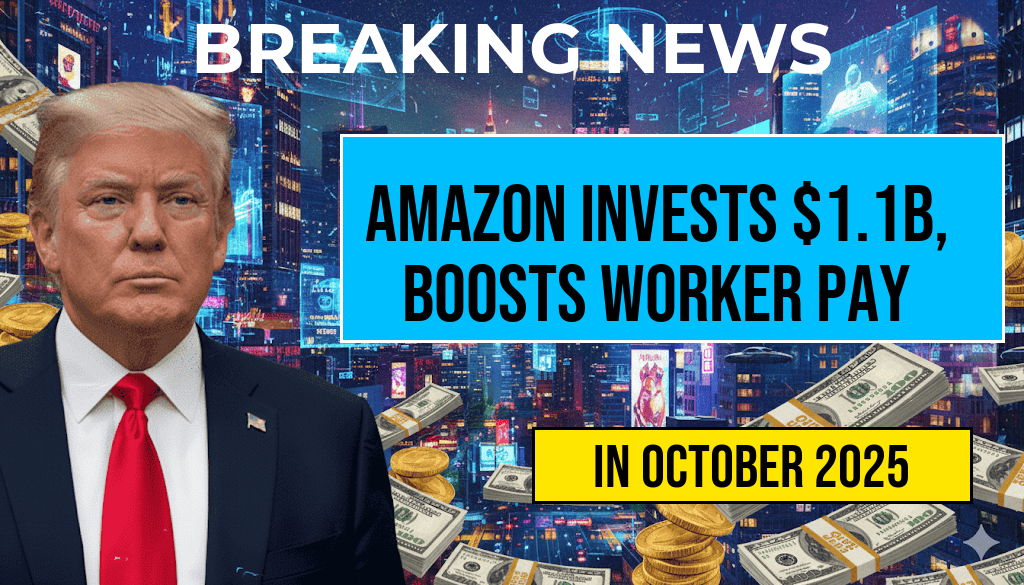Amazon has announced a significant investment of $1.1 billion aimed at expanding and improving its fulfillment network across the United States. This infusion of capital is already making waves within the logistics industry, notably leading to a rise in fulfillment workers’ average pay to over $23 per hour. The move underscores Amazon’s ongoing commitment to enhancing worker compensation amid mounting competition for logistics talent and evolving industry standards. The investment not only boosts operational capacity but also signals a strategic shift toward more competitive wages, which could reshape employment dynamics within Amazon’s vast warehouse network.
Details of Amazon’s $1.1 Billion Investment
Scope and Purpose of the Funding
Amazon’s recent commitment involves deploying $1.1 billion toward infrastructure upgrades, technology enhancements, and workforce expansion across multiple distribution centers nationwide. The funds are allocated to modernize facilities, incorporate automation, and improve worker amenities, reflecting Amazon’s efforts to stay ahead in a competitive e-commerce landscape. According to Amazon spokespersons, this investment is designed to not only increase throughput but also to foster a more attractive working environment, ultimately aiming to recruit and retain a skilled labor force.
Impact on Worker Compensation
One of the most immediate effects of this strategic investment has been a notable increase in average hourly wages for fulfillment workers. Data from the company indicates that the typical worker now earns more than $23 per hour, a substantial jump from previous averages. This rise aligns with Amazon’s broader initiatives to improve employee satisfaction and reduce turnover, which has been a persistent challenge in the logistics sector.
Industry and Labor Market Implications
Competitive Wage Trends
Amazon’s wage increase is part of a larger trend within the logistics and warehousing industries, where companies are raising pay to attract qualified staff amid a persistent labor shortage. According to industry reports, wages for fulfillment center workers have been climbing steadily, with some companies offering signing bonuses and enhanced benefits to secure talent. Amazon’s move to surpass a $23 per hour average positions it as a leader in the sector, setting a benchmark for competitors who are also strategizing to improve compensation packages.
Workforce Dynamics and Employee Satisfaction
Higher wages can have a tangible impact on workforce stability and morale. Industry analysts suggest that increased pay may reduce turnover rates and improve productivity, ultimately benefiting both employees and the company’s bottom line. Conversely, critics argue that wage hikes alone do not address underlying issues such as working conditions or job pressures. Nonetheless, Amazon’s investment demonstrates a recognition of the importance of competitive compensation in maintaining a resilient workforce.
Broader Economic Context
| Company | Average Hourly Pay | Additional Benefits |
|---|---|---|
| Amazon | $23+ | Healthcare, retirement plans, stock options |
| Walmart | $19–$21 | Medical coverage, tuition assistance |
| FedEx | $20–$22 | Health insurance, paid time off |
This table illustrates how Amazon’s pay rates compare within the broader logistics and retail sectors, where wages are gradually increasing but often remain below Amazon’s new average. The company’s enhancements could influence wage structures industry-wide, prompting other firms to reevaluate their compensation strategies.
Future Outlook and Industry Response
Potential for Wage Inflation
As Amazon continues to invest heavily in its logistics infrastructure, similar investments from competitors are anticipated. The resulting wage inflation may lead to a more sustainable, worker-friendly employment environment across the sector. Experts from consulting firms such as McKinsey & Company note that sustained investments in workforce development could also foster innovation and operational efficiency in the long term.
Impact on E-Commerce and Consumer Expectations
Enhanced worker compensation and improved working conditions can translate into better service levels for consumers. Faster fulfillment times, fewer delays, and higher employee satisfaction are likely to bolster Amazon’s reputation and customer loyalty. Industry observers predict that these developments will accelerate the shift toward more equitable labor practices in the logistics industry, influencing policies and standards nationwide.
Sources: Wikipedia – Amazon, Forbes – Warehousing Wage Trends
Frequently Asked Questions
What is the significance of Amazon’s $1.1 billion investment?
Amazon’s $1.1 billion investment highlights its commitment to improving working conditions and increasing wages for fulfillment workers, aiming to enhance employee satisfaction and retention.
How has Amazon’s investment impacted workers’ average pay?
Following the investment, the average pay for fulfillment workers has surpassed $23 per hour, making it a more competitive and attractive employment opportunity.
What factors contributed to the increase in fulfillment workers’ pay?
The significant financial investment allowed Amazon to offer higher wages, along with improved benefits and working conditions, to attract and retain skilled fulfillment workers.
Are there additional benefits for Amazon fulfillment workers besides increased wages?
Yes, in addition to higher pay, Amazon has introduced benefits such as better healthcare options, more flexible schedules, and opportunities for career growth within the company.
What does this investment indicate about Amazon’s future plans for employee welfare?
This investment demonstrates Amazon’s commitment to prioritizing employee welfare and creating a more sustainable and supportive work environment for its fulfillment workers.






